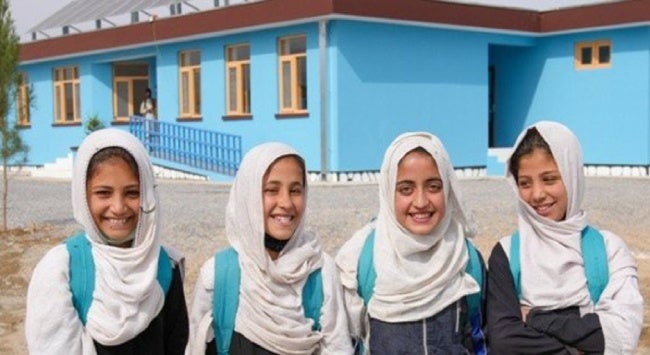Summary
The issue of the ban on girls’ education in Afghanistan reveals rare glimpses of division within the Afghan Taliban. While the group’s spokesperson denies fractures, competing positions among senior figures suggest internal disagreement over the current policy on the issue and the direction of the regime. This tension on the issue raises a parallel question relating to the Taliban shaping Afghanistan, namely, how the act of governing is, in turn, reshaping the Taliban.
Over the past five decades, Afghanistan has undergone repeated upheavals – from the Soviet invasion and civil war to the rise of the Taliban, their fall in 2001 and return to power in 2021. The Taliban emerged and operated for much of this time in the context of conflict and external intervention. This inevitably shaped a movement geared toward resistance rather than governance. With the end of foreign occupation and with 20 years spent as an insurgent force, the Taliban face the difficult task of ruling a fragmented country with pressing domestic needs and sharpened international scrutiny. Recent tensions, particularly over issues like girls’ education, suggest strains within its leadership.
In January 2025, the Deputy Foreign Minister of the Taliban, Mohammad Abbas Stanikzai, criticised the ban on education for girls, going against the Taliban’s supreme leader, Mullah Hibatullah Akhundzada. In a speech made in January this year, Stanikzai said restricting women’s education was not in line with the Sharia. The official spokesman of the Taliban, Zabihullah Mujahid, has rejected speculations that fractures are occurring within the organisation or among its leadership, adding that “The IEA (Islamic Emirate of Afghanistan) remains a united front, and this system is the result of unity. Without unity, nothing would exist.” In April 2025, however, three additional Taliban officials informed the National Broadcasting Channel News that the ban on girls’ education continues to create friction, as some senior members of the regime argue for the restrictions to be rolled back.
Internal dissent within the Taliban is not new. Even in the lead-up to the September 11 attacks, divisions were evident, with reports pointing to a faction led by Mullah Mohammad Rabbani, then de facto second-in-command, who opposed international terrorism and was willing to engage with the United Nations (UN) in secret. His death in April 2001 marked a turning point, after which the Taliban adopted harsher domestic policies, including the closure of foreign hospitals and UN food programmes. These patterns of internal disagreement have persisted. Following the United States (US) withdrawal from Afghanistan in 2021, reports emerged of leadership struggles over policy direction. In 2022, Taliban officials publicly indicated that the ban on girls’ education would be lifted by March 2022, only for the Emir, Sheikh Hibatullah Akhundzada, to overrule his council and extend the ban indefinitely. This centralised style of rule echoes the earlier leadership of Mullah Muhammad Omar, whose personalised decision-making weakened institutional structures like the inner shura.
The persistence of internal divisions raises some important questions about the Taliban’s move from insurgency to governance. More significantly, the challenge lies in how the group manages these internal tensions. Diplomatic engagement with Afghanistan continues to increase. No country has formally recognised the Taliban, but many maintain interaction through economic and trade ties. China, for instance, has appointed an ambassador to Afghanistan, Zhao Xing, and has expressed interest in mining its natural resources, all of which would aid its plans for the Belt and Road Initiative. India recently accepted a Taliban representative, Ikramuddin Kamil, from Afghanistan as an ‘acting consul’ without an official diplomatic status. In March 2025, the Taliban government announced that three senior members of the Haqqani network had their bounties removed by the US government. Additionally, US citizen, George Glezmann, was released, and US officials Adam Boehler and Zalmay Khalilzad visited Kabul, which signals a growing level of engagement with the Taliban.
The more the Taliban is drawn into international frameworks, the more consequential its internal rifts become. The demands of governing undoubtedly strain cohesion and present tensions between balancing ideological rigidity and attempts at pragmatism. Nevertheless, the Taliban remain opaque in both its structure and strategy, and little is known about the inner workings of the movement. Yet, rare glimpses of friction within the leadership raise a parallel question to how the Taliban is shaping Afghanistan, namely, how the act of governing is, in turn, reshaping the Taliban. Indeed, while internal tensions may not yet point to systemic change, they do indicate that consensus within the movement is not absolute. And as governance pressures mount and external engagement slowly increases, the Taliban’s internal cohesion will likely face further tests. For now, the movement continues to operate largely on its own terms. Whether time will compel adjustment, reveal deeper fractures or simply entrench existing patterns is something only the coming years can tell.
. . . . .
Dr Imran Ahmed is a Research Fellow at the Institute of South Asian Studies (ISAS), an autonomous research institute at the National University of Singapore (NUS). He can be contacted at iahmed@nus.edu.sg. Ms Tanujja Dadlani is a Research Analyst at the same institute. She can be contacted at tanujjad@nus.edu.sg. The authors bear full responsibility for the facts cited and opinions expressed in this paper.
Pic Credit: X Unicef
-
 More From :
More From :
-
 Tags :
Tags :
-
 Download PDF
Download PDF



